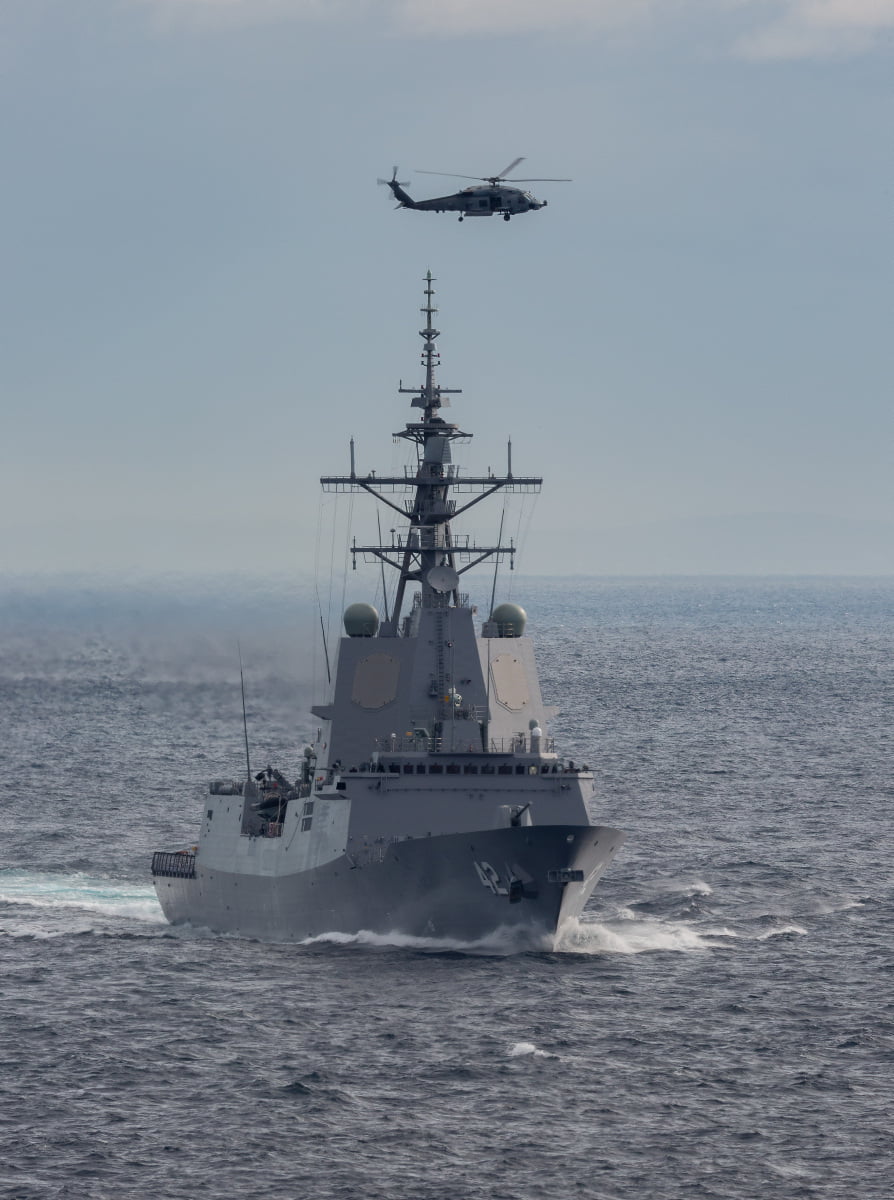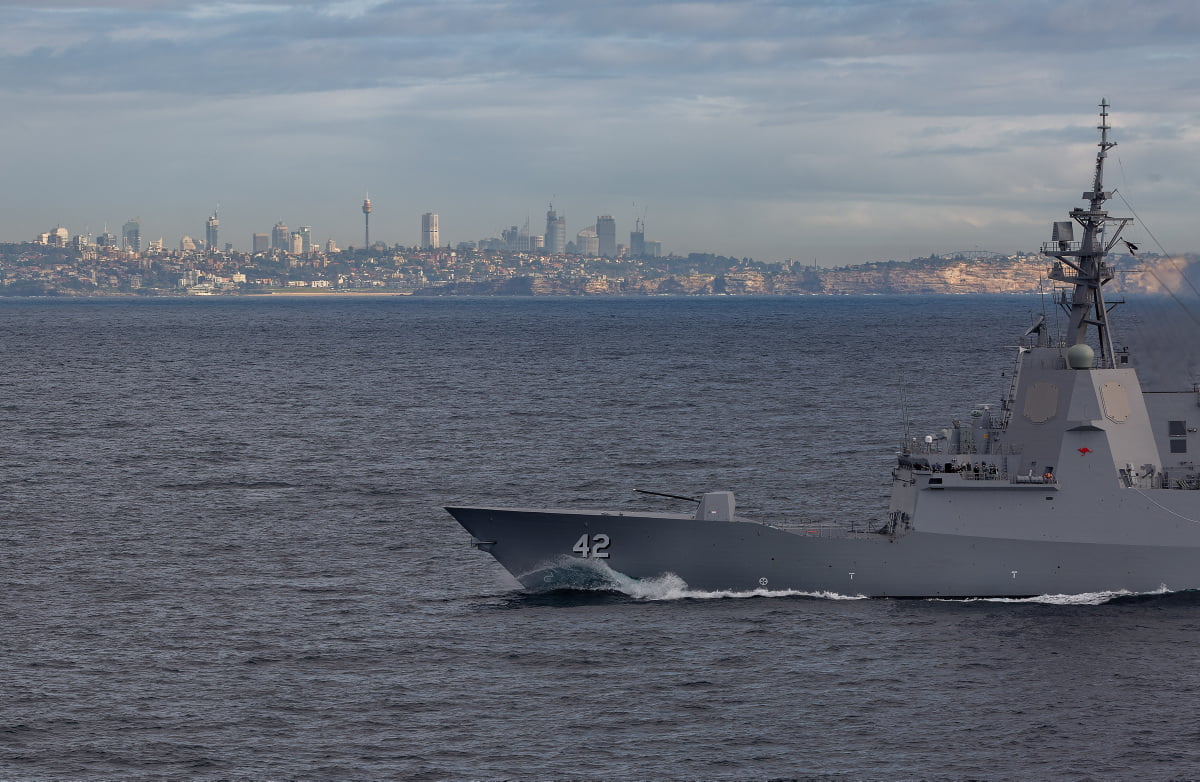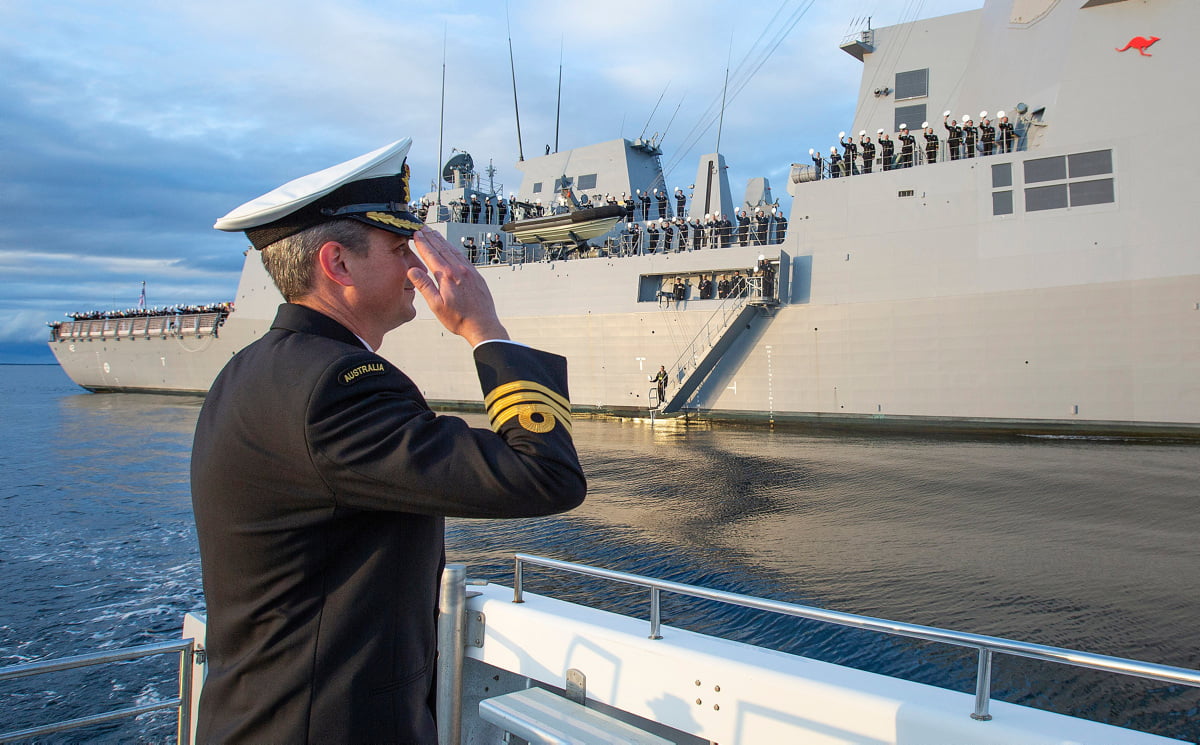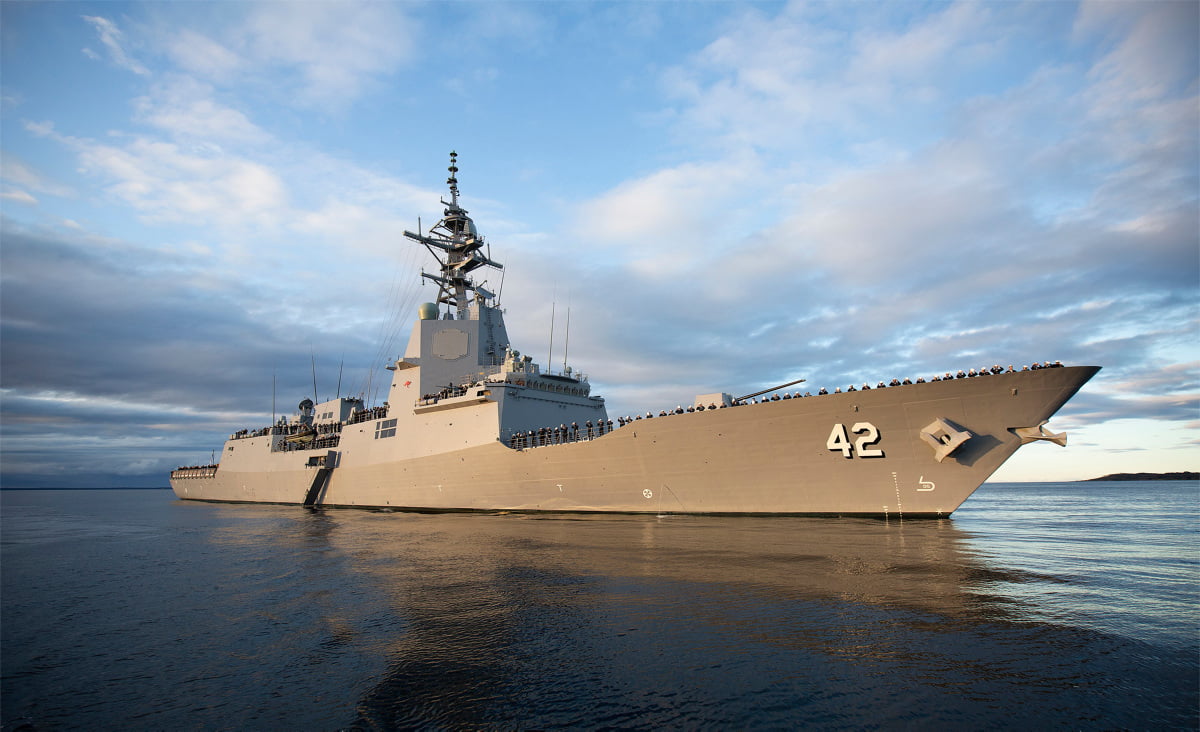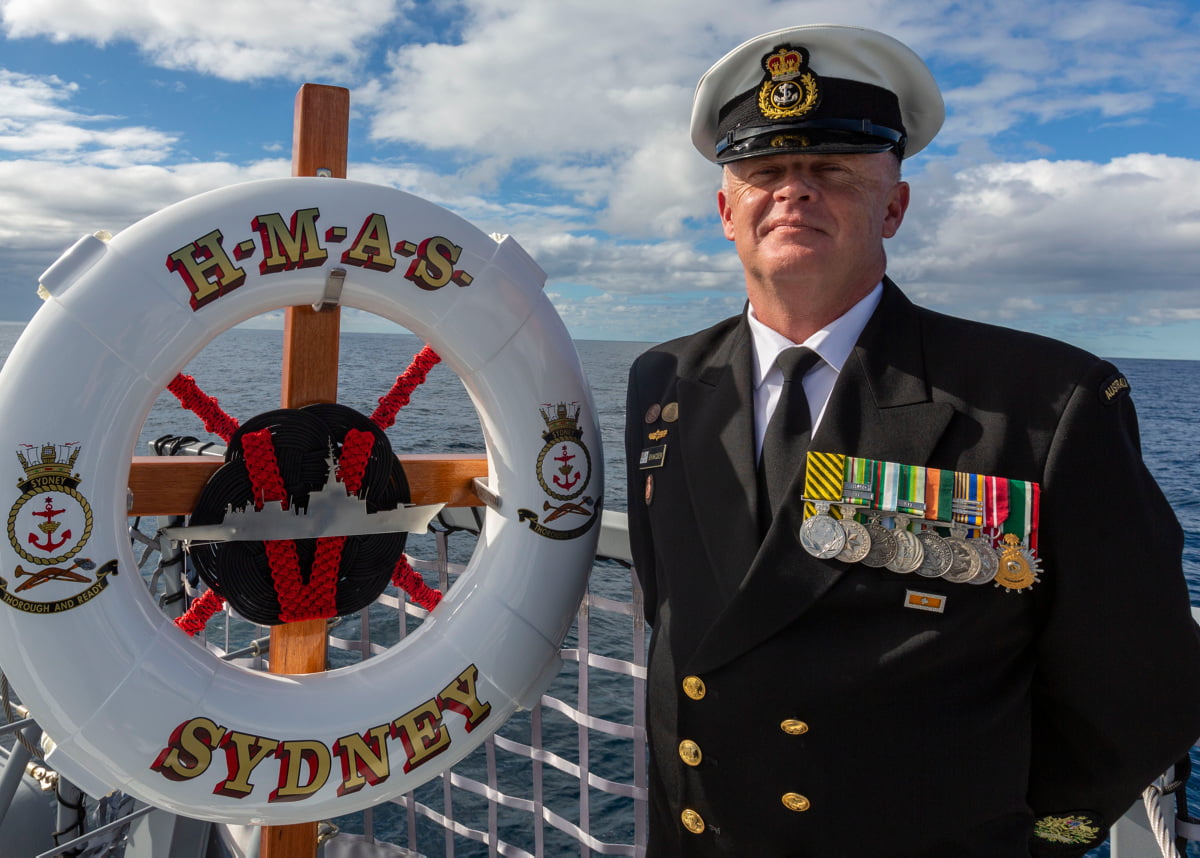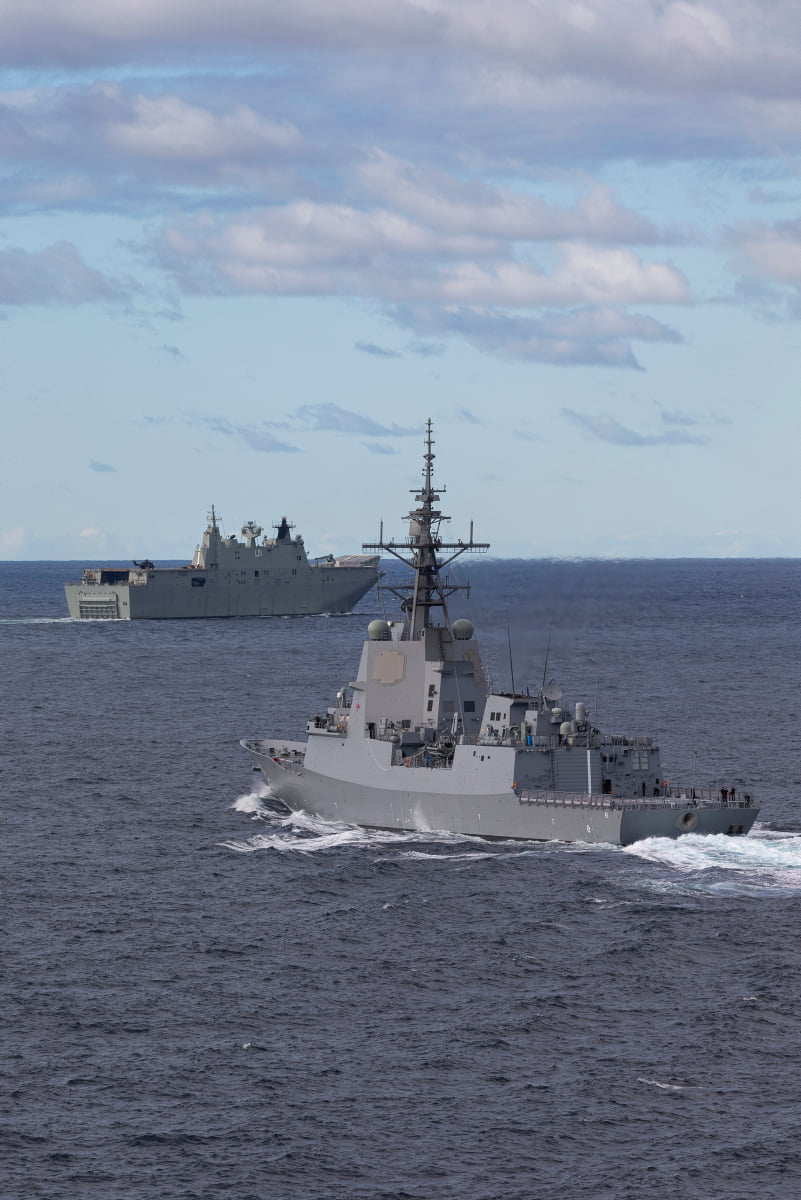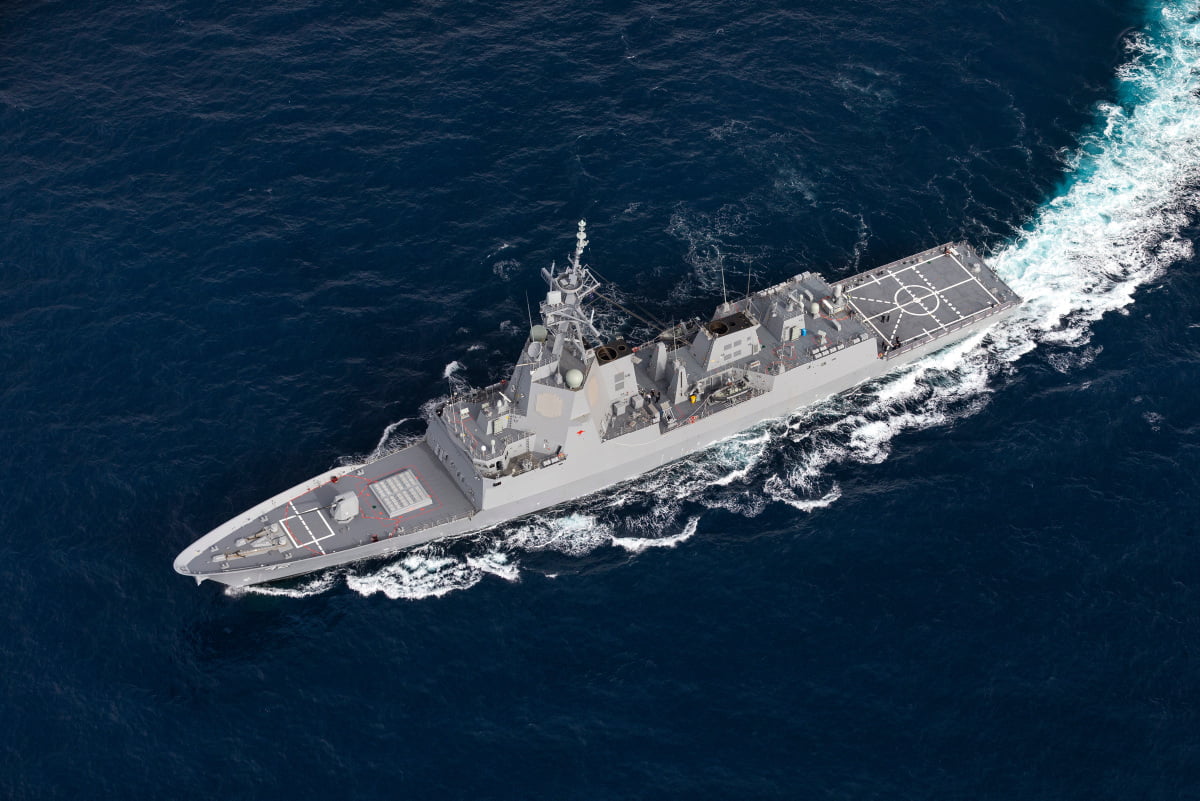By Robbin Laird, Williams Foundation Research Fellow
Recently, the third and final Air Warfare destroyer, appropriately named HMAS Sydney was commissioned into the Royal Australian Navy.
This was a very significant moment on many levels for Australia and for its allies in the Asia-Pacific region.
For this is not just about what a single Air Warfare destroyer capable of doing; it is about what it can do when operating as part of the broader maritime kill web, either to defend Australia out to its first island chain, or to contribute to a wider set of defense challenges in the region an beyond.
The Air Warfare destroyer is a key foundation for the new wave of Australian shipbuilding, one in which mission systems and integratable is a key requirement.
It is also about learning from that build process to set in motion a new approach, which I have highlighted in my report on the new build offshore patrol vessel.
In an article which I published in USNI Proceedings in 2012, I highlighted the coming of the kill web in my concept of the long reach of Aegis. The ADF in embracing the fifth-generation revolution and the opportunity to reshape the ADF along the lines of an integratable force, views the coming of the Air Warfare Destroyer not simply in terms of a powerful new platform for the Navy, but as a contribution to the integrated distributed force.
As RAAF Air Vice Marshal Chipman, now the Australian Military Representative to NATO and the European Union put it earlier in an interview:
“We need to have broad enough of a perspective so that we can drive programs towards joint outcomes.
“For example, it will be crucial to bring E-7, with F-35 and air warfare destroyers into a common decision-making space so that we can realise built in capabilities for integrated air and missile defense.”
“And that needs to be informed by shaping a common perspective with the USN and USAF as well.
The commissioning of the final and latest Air Warfare Destroyer was highlighted in a story published on May 19, 2020 by the Australian Department of Defence on May 19, 2020:
The Royal Australian Navy welcomed its newest Air Warfare Destroyer into the fleet yesterday.
The commissioning ceremony, off the coast of New South Wales, marked the moment the 147-metre-long HMAS Sydney V became one of Her Majesty’s Australian Ships.
It is the first time since World War II that a RAN warship has been commissioned at sea.
Chief of Navy Vice Admiral Mike Noonan and Commander of the Australian Fleet Rear Admiral Jonathan Mead were aboard the guided missile destroyer to officially welcome her into service.
Vice Admiral Noonan told the commissioning crew that Sydney’s history had a legendary pedigree.
“You will all form part of the HMAS Sydney fabric. You are sailors and officers who will all continue the proud Sydneylegacy,” Vice Admiral Noonan said.
“It is a great responsibility – one I know each and every one of you is capable of honouring and carrying forward in to the future.
“HMAS Sydney, welcome home, welcome back to our fleet. Your name once again takes pride and its rightful place in Her Majesty’s fleet.”
During the ceremony the ship received a blessing and Sydney’s Commanding Officer, Commander Edward Seymour, read the ship’s commissioning order before the Australian white ensign was hoisted, signifying completion of the commissioning.
She brings an outstanding, Australian-built air warfare capability over an exceptional range and gives Navy a surface combat capability like never before.
The crew also watched video messages of congratulations from Governor-General David Hurley, Prime Minister Scott Morrison, Minister for Defence Linda Reynolds and the ship’s sponsor, Judy Shalders.
Commander Seymour said he was proud to lead the ship’s company and carry forward the legacy of previous Australian warships that carried the name.
“It isn’t often in a naval career that you are part of commissioning a brand new warship, but to do so at sea and carrying the significant legacy behind the name Sydney, is a special feeling for the entire ship’s company,” Commander Seymour said.
“A lot of hard teamwork has led us to this moment of bringing a world-class warship into the fleet and we’re eager to now prove what Sydney can do.
“She brings an outstanding, Australian-built air warfare capability over an exceptional range and gives Navy a surface combat capability like never before.”
Sydney is the last of three Hobart-class vessels built for Navy at Osborne in South Australia and is based on the Navantia F100 frigate design.
She is equipped with advanced combat systems, providing the ship with layered offensive and defensive capabilities to counter conventional and asymmetric threats.
Sydney will now undergo her test and evaluation period where she will integrate into the fleet, and Navy personnel will develop their proficiencies with her cutting-edge Aegis combat system.
Sydney’s sister ships, Hobart and Brisbane, commissioned in 2017 and 2018 respectively and all three vessels are home-ported at Fleet Base East in Sydney.
The first RAN vessel to be commissioned at sea was HMAS Matafele. The World War II stores carrier was commissioned on January 1, 1943.
See also, the following:
Visiting HMAS Hobart: A Key Building Block in the Remaking of the Royal Australian Navy
Also, see the ASPI report published in 2018:
ASPI Air warfare destroyer



